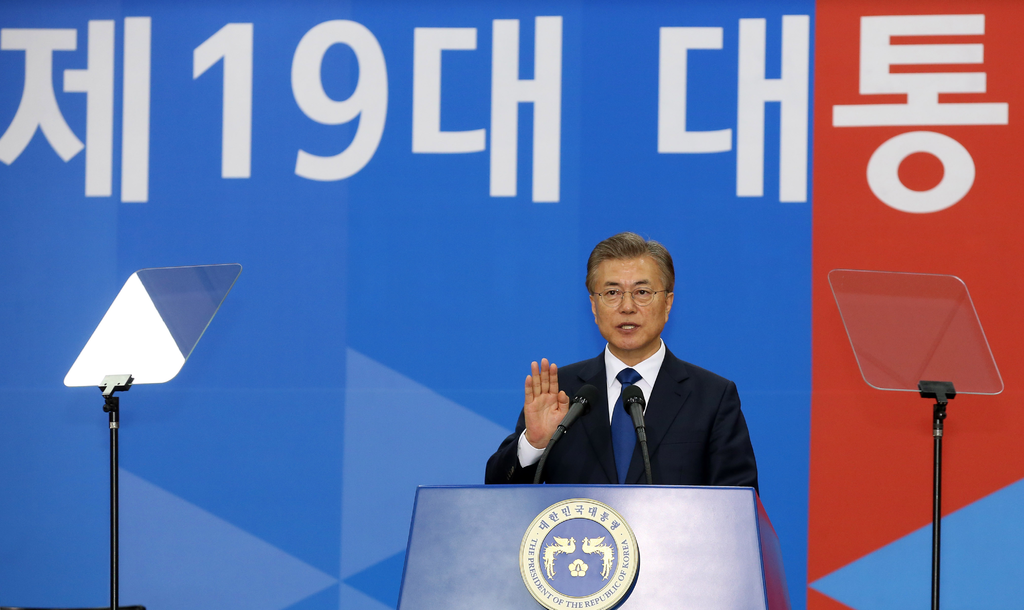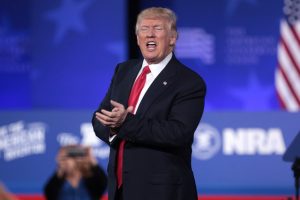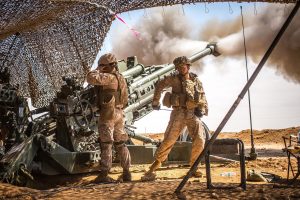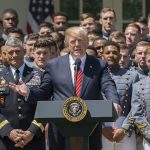by John Feffer
The U.S. media has been full of dire warnings of an imminent U.S. attack on North Korea.
Two aircraft carriers are now within firing distance of North Korea. They’re part of a military exercise in the Sea of Japan in which South Korea and the United States are coordinating a drill involving advanced bombers. The Pentagon recently tested a successful anti-missile interceptor, which some analysts interpret as a pointed message to Pyongyang. Prominent geopolitical analyst George Friedman believes that U.S. government representatives briefing officials in Guam on civil defense is another sign of an upcoming attack because the island could be the target of North Korean retaliation.
President Donald Trump is an impulsive leader. He is unhappy with the slowness of domestic reform in the United States, the critical response by European leaders after his recent trip to the NATO and G7 meetings, and the reluctance of China to put more pressure on North Korea. If he were convinced that a preemptive attack on North Korea would represent the “big win” that he is craving for his presidency, he might just pull the trigger.
Still, I’m not convinced that the United States is preparing an actual attack. For decades, Washington has emphasized that all options are on the table – including military ones – and operational plans have long been in place for an attack on North Korea. The latest, OPLAN 515, even incorporates a preemptive attack for the first time. But this is all contingency planning, not the lead-up to an order to start bombing.
Moreover, Trump has been briefed on the horrendous consequences of a war on the Korean peninsula, which would include mass civilian casualties in South Korea and U.S. troop losses there and in Japan. A two-month strategic review of North Korea policy undertaken by the administration concluded that a better strategy consists of “maximum pressure and engagement.”
As one anonymous U.S. official said, “the U.S. doesn’t intend to use military force against North Korea in response to either a nuclear test or a missile launch. That might change if North Korea fires a missile at South Korea, Japan or U.S. territory. But Pyongyang is unlikely to engage in such suicidal behavior.
Still, there is always the possibility of conflict breaking out on the Korean peninsula, through miscalculation, misinterpretation, or just plain error.
And that’s where Moon Jae-in comes in.
Currently, so far as anyone knows, the Trump administration is using only maximum pressure against North Korea, not engagement. The president has mentioned the possibility of meeting with North Korean leader Kim Jong Un. But North Korea has conducted nine missile launches so far in 2017, so Washington isn’t about to extend an olive branch at this point for fear of appearing to appease Pyongyang.
South Korea’s new president Moon Jae-in, however, is in a better position to get the ball rolling. During his campaign, he promised a more engagement-friendly approach to North Korea. At his oath-taking ceremony, he said, “I am willing to go anywhere for the peace of the Korean Peninsula. If needed, I will fly immediately to Washington. I will go to Beijing and I will go to Tokyo. If the conditions shape up, I will go to Pyongyang.”
It will take time before the groundwork is prepared for another inter-Korean summit. In the meantime, the Moon administration is hoping to reestablish lines of communication with Pyongyang that were cut in February 2016 around the time of the shutdown of the Kaesong Industrial Complex. Also in the works are an expansion of civil society contacts and humanitarian assistance to the North. Moon has talked about not only reopening the Kaesong complex, which was administered by South Korean managers and staffed by North Korean workers, but even enlarging it.
At the moment, Moon Jae-in is caught in the middle between two missiles – the ones launched by North Korea and the ones the United States has deployed as part of THAAD in South Korea. It’s a frustrating position because South Korea has been largely passive. It’s time for South Korea to become a more active participant.
Moon has already sent out his envoys to start this work. Seoul mayor Park Won Soon met with ASEAN leaders to get the backing of Southeast Asian nations for a new policy toward North Korea. The visit by Lee Hei-chan to Beijing has already begun the process of repairing the frayed China-South Korean relationship, and Chinese tour groups are set to resume their visits to South Korea. Chinese support is a key part of any new approach to Pyongyang.
The biggest challenge will be the United States. Trump has already signaled his preference for nationalist militarists like Shinzo Abe. What can a progressive like Moon Jae-in offer when he visits Washington at the end of June?
Moon should open up his wallet.
Trump wants investments of foreign capital so that he can demonstrate that he’s creating American jobs. Shortly after his inauguration, Samsung, LG Electronics, and Hyundai all announced that they might build new manufacturing facilities in the United States. Moon should firm up these offers and present a splashy multibillion-dollar investment package to the president.
He should also explain the virtues of the Kaesong Industrial Complex and why such inter-Korean projects, if expanded, could refocus North Korea on economic rather than military power.
Finally, he should come armed with a one-page infographic that explains the devastating economic impact an attack on North Korea would have on the economies of Northeast Asia and, by extension, the United States as well.
Money talks, and President Trump listens. Moon Jae-in can use South Korea’s economic power to amplify its voice in the North Korea nuclear crisis, turn Seoul’s passive stance into an active role, and reduce the risk of war on the Korean peninsula.
Republished, with permission, from Hankyoreh. Photo: Moon Jae-in.






A rare and clear article on the Korean conundrum.